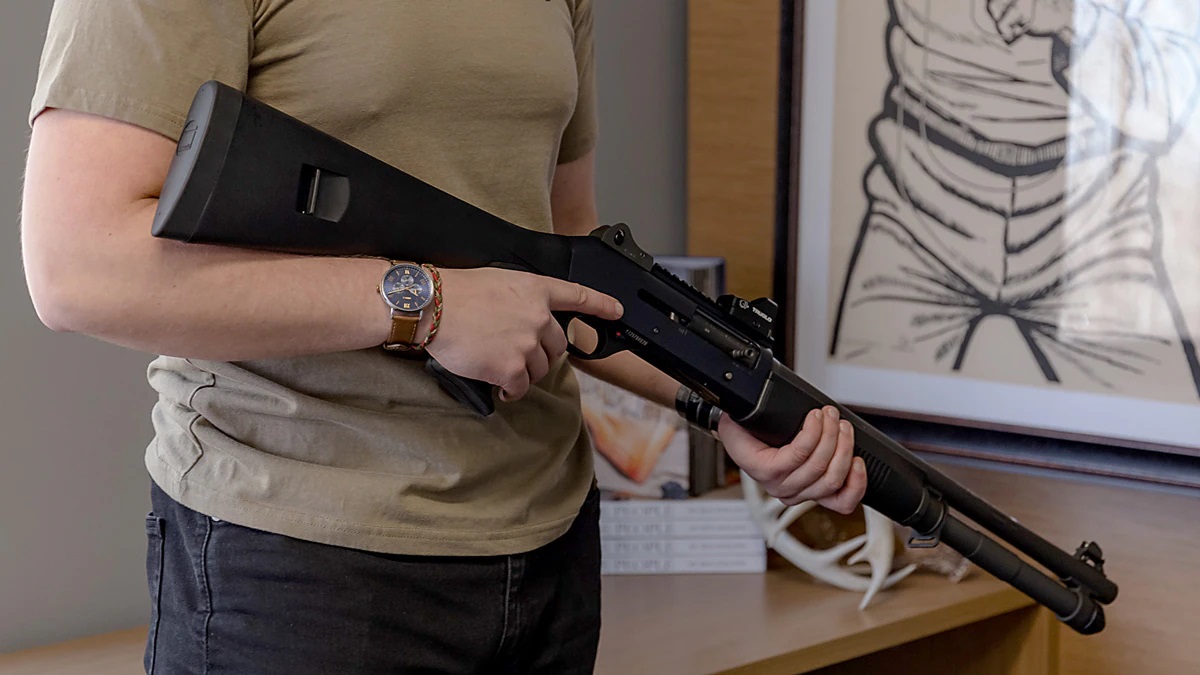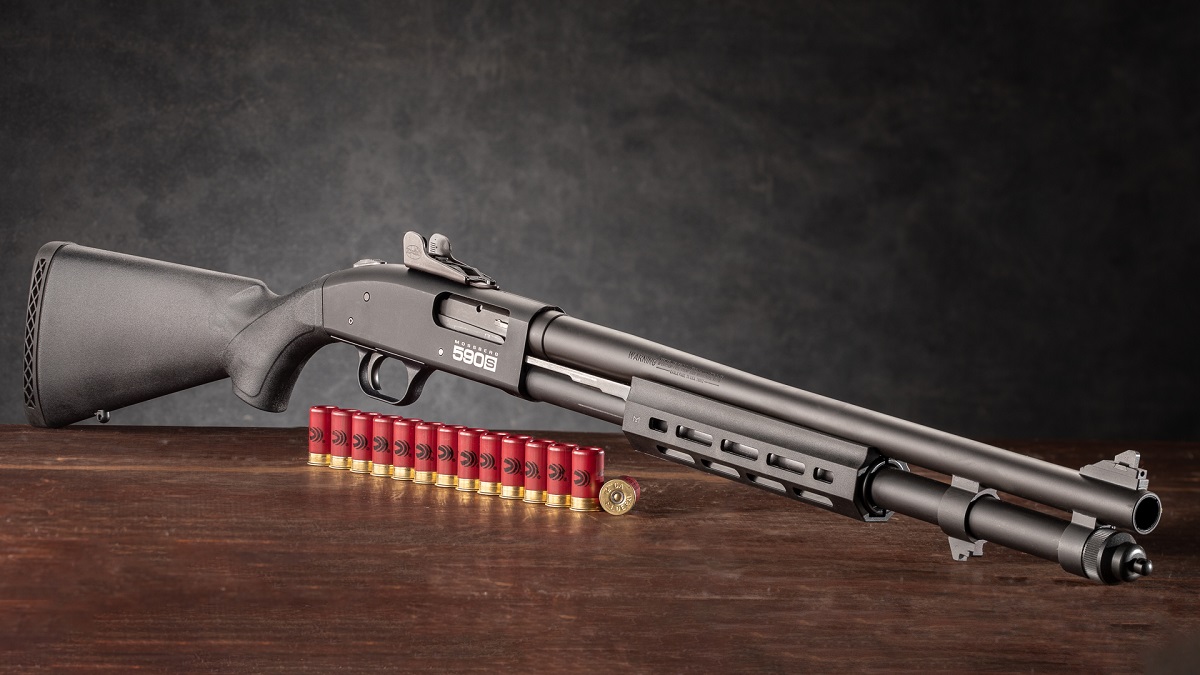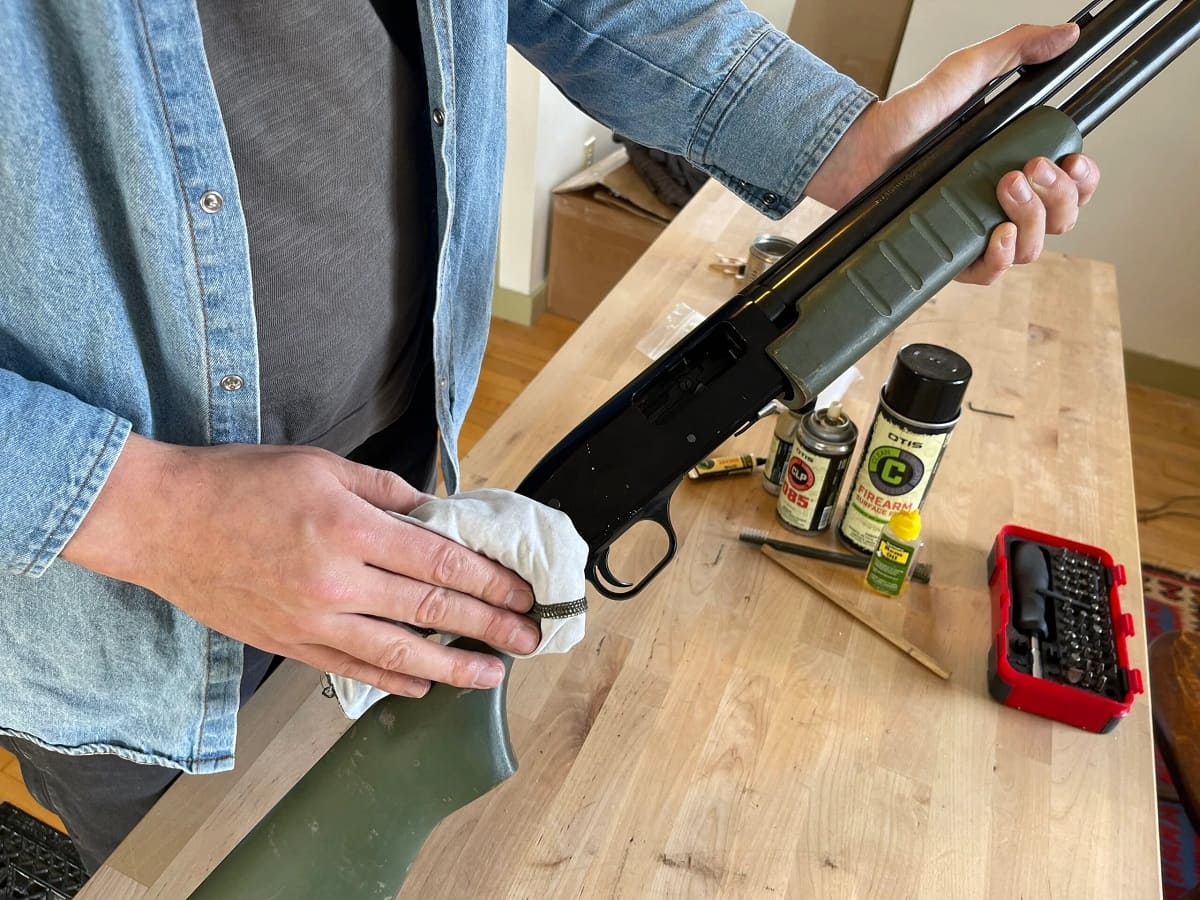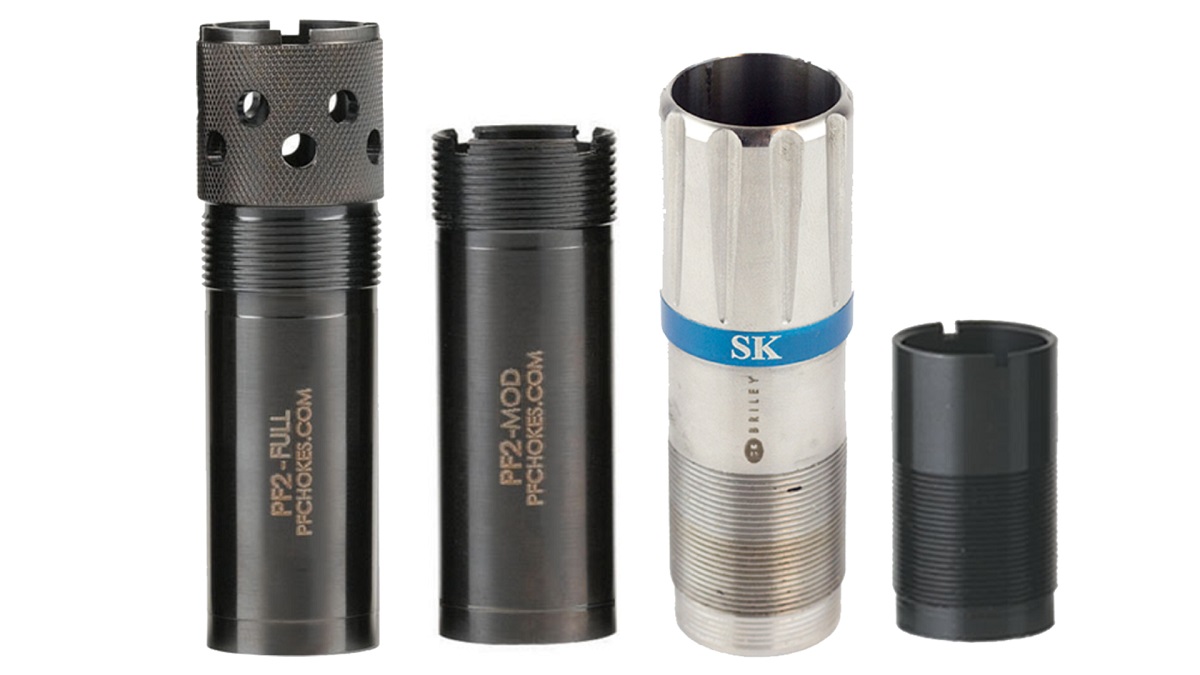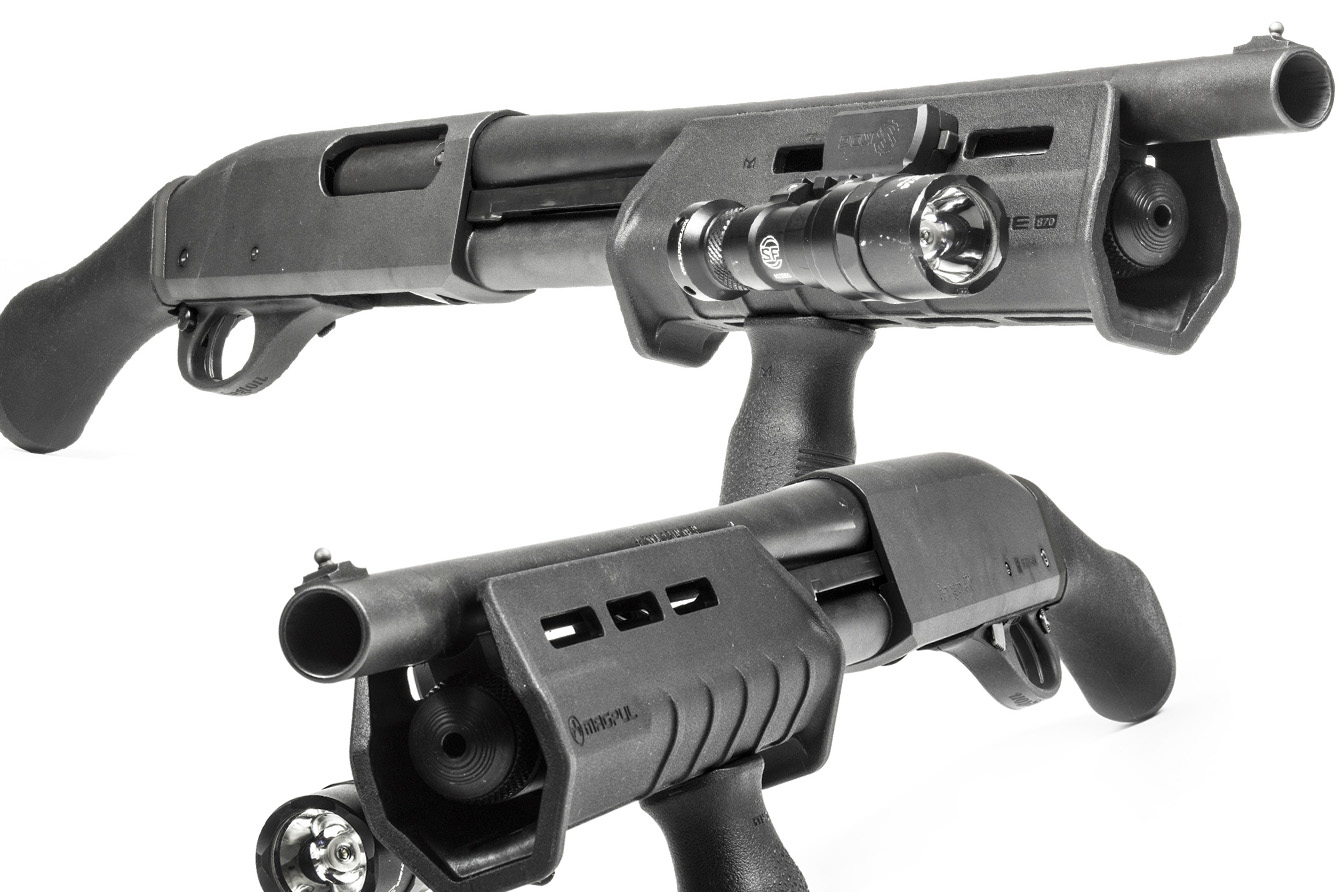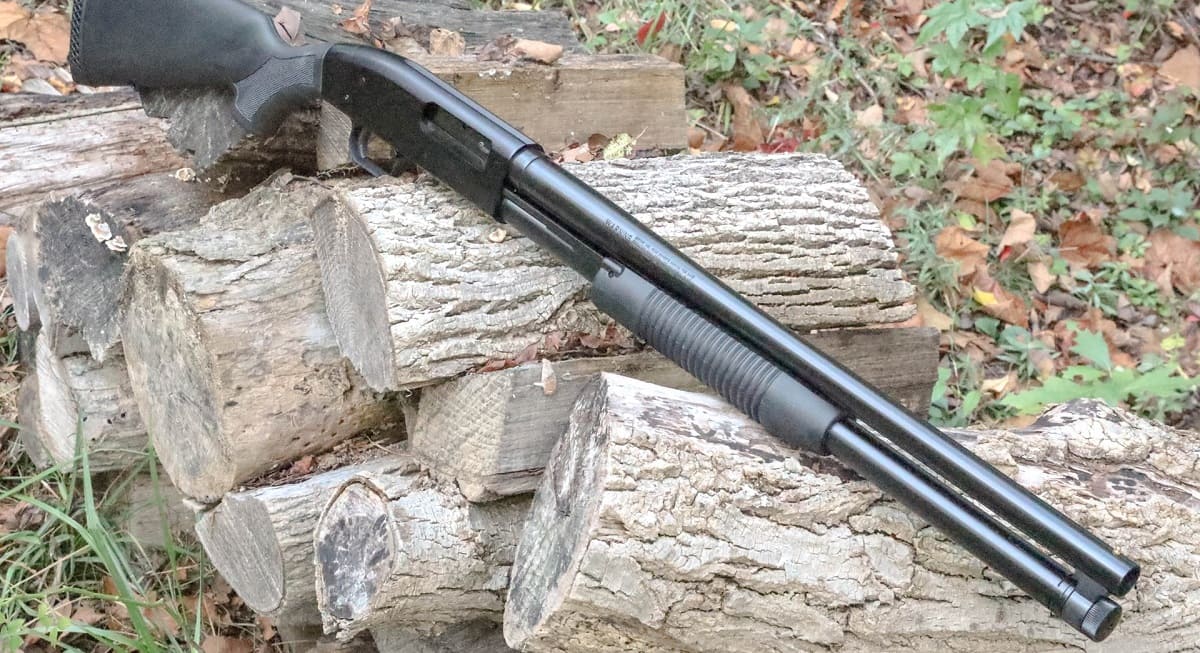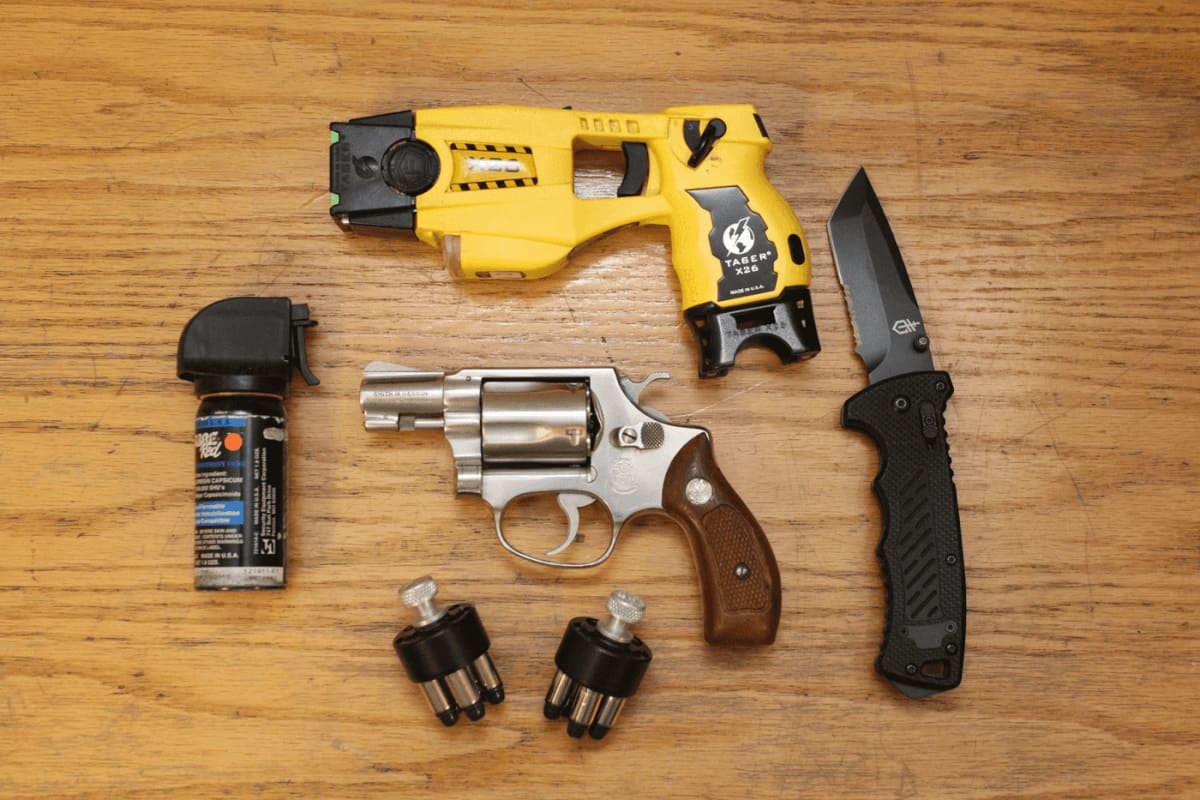Home>Home Security and Surveillance>How Can You Use A Shotgun For Home Defense In Massachusetts
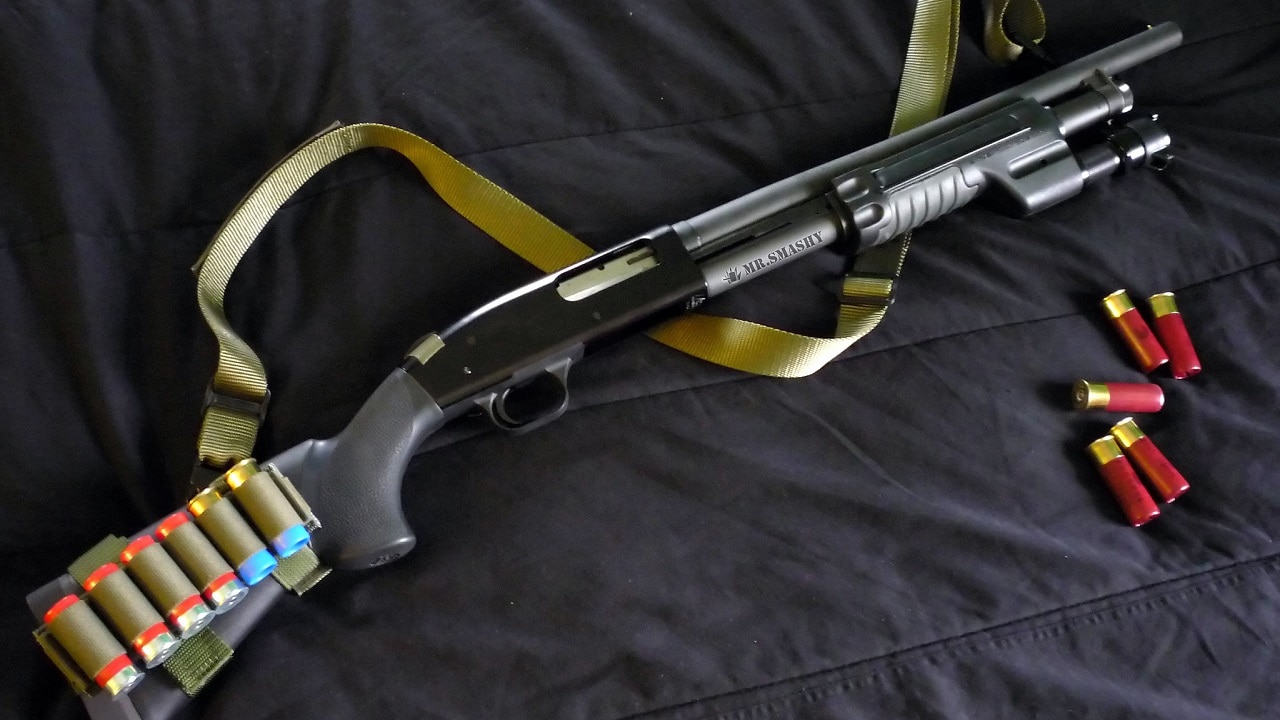

Home Security and Surveillance
How Can You Use A Shotgun For Home Defense In Massachusetts
Modified: March 6, 2024
Discover how to effectively use a shotgun for home defense in Massachusetts. Enhance your home security and surveillance with these expert tips.
(Many of the links in this article redirect to a specific reviewed product. Your purchase of these products through affiliate links helps to generate commission for Storables.com, at no extra cost. Learn more)
Introduction
When it comes to home security and surveillance, one of the most important aspects to consider is how to effectively defend your home in case of an intruder or potential threat. While there are numerous options available, including alarms and security systems, many homeowners choose to have a firearm for self-defense. In Massachusetts, one popular choice for home defense is a shotgun.
However, it is crucial to understand the laws and regulations surrounding the use of shotguns for home defense in Massachusetts. By being knowledgeable about the law and taking necessary precautions, you can ensure that you are using a shotgun legally and responsibly to protect yourself and your loved ones.
In this article, we will delve into the specific factors you need to consider before using a shotgun for home defense in Massachusetts. We will also discuss the importance of choosing the right shotgun, proper training and practice, storing and securing your firearm, home defense tactics, and how to interact with law enforcement in case of an incident. By the end of this article, you will have a comprehensive understanding of how to effectively use a shotgun for home defense in Massachusetts.
Key Takeaways:
- Using a shotgun for home defense in Massachusetts requires understanding the law, proper training, and choosing the right shotgun to protect your loved ones legally and responsibly.
- Storing, securing, and engaging potential threats with a shotgun for home defense involves prioritizing safety, proper tactics, and interacting with law enforcement to ensure a safe and effective response.
Understanding the Law in Massachusetts
Before utilizing a shotgun for home defense, it is crucial to have a thorough understanding of the laws and regulations in Massachusetts. While Massachusetts does allow for the use of firearms for self-defense, there are certain legal requirements and restrictions that must be followed.
Firstly, individuals must obtain a Firearm Identification Card (FID) or a License to Carry (LTC) in order to own and possess a shotgun. The FID card is required for the purchase and possession of a shotgun solely for sporting purposes, while the LTC is needed for the purchase and possession of a shotgun for self-defense purposes.
It is important to note that Massachusetts has strict regulations regarding the capacity and features of shotguns used for self-defense. Shotguns must have a capacity of no more than 5 rounds, and features such as folding or telescoping stocks, flash suppressors, and bayonet mounts are prohibited. Additionally, the barrel length must be at least 18 inches.
In Massachusetts, the Castle Doctrine applies, which allows individuals to use force, including deadly force, against an intruder or someone who unlawfully enters their dwelling. However, there is a duty to retreat and attempt to avoid conflict if it can be done safely. The use of deadly force is only permitted if there is a reasonable belief that it is necessary to protect oneself or others from imminent death or serious bodily harm.
It is essential to consult and familiarize oneself with the specific laws and regulations in Massachusetts, as they can vary and are subject to change. Additionally, it is advisable to consult with a legal professional to ensure compliance with all applicable laws.
By understanding and abiding by the law in Massachusetts, you can ensure that you are legally using a shotgun for home defense and protecting yourself and your loved ones within the boundaries of the law.
Factors to Consider Before Using a Shotgun for Home Defense
While a shotgun can be an effective tool for home defense, there are several important factors to consider before deciding to use one. These considerations will help ensure your safety and the safety of everyone in your household.
Firstly, it is crucial to assess your level of comfort and confidence with using a shotgun. Using a firearm requires knowledge, skill, and training. If you are unfamiliar or uncomfortable with firearms, it is highly recommended to seek proper training from a certified instructor. Familiarizing yourself with the operation, handling, and safety procedures of a shotgun is essential before using it for home defense.
Another factor to consider is the layout and structure of your home. Shotguns have a wide spread pattern when fired, which can increase the risk of hitting unintended targets. It is important to assess your home’s layout and determine potential obstacles or areas where unintentional damage may occur. Taking precautions such as reinforcing doors and utilizing safe angles of engagement can help minimize risks.
Additionally, it is crucial to have a plan in place for communication and coordination with other members of your household. Establishing a clear plan for what to do in case of an intruder or threat can help ensure everyone’s safety. This includes identifying safe areas within your home, establishing communication methods, and designating specific roles and responsibilities for each member of your household.
Furthermore, it is important to consider the potential legal and emotional consequences of using lethal force in self-defense. While the primary goal of using a shotgun for home defense is to protect yourself and your loved ones, it is important to be aware of the potential legal ramifications. Understanding the laws regarding self-defense in your jurisdiction and the duty to retreat, if applicable, is crucial.
Lastly, it is important to regularly evaluate and assess your readiness and capabilities for using a shotgun for home defense. This includes periodically reviewing safety protocols, maintaining your firearm in good working condition, and staying up to date with any changes in laws or regulations.
By carefully considering these factors before using a shotgun for home defense, you can ensure that you are well-prepared, responsible, and ready to protect your home and loved ones in the event of a threat or intruder.
Choosing the Right Shotgun for Home Defense
When it comes to choosing a shotgun for home defense, there are several key factors to consider. The right shotgun can enhance your ability to protect yourself and your loved ones effectively. Here are some important considerations to keep in mind:
1. Gauge: Shotguns come in various gauges, with 12 gauge being the most common for home defense. A 12-gauge shotgun offers a good balance of power and recoil control, making it suitable for most individuals. However, smaller individuals or those sensitive to recoil may prefer a 20-gauge shotgun for easier handling.
2. Barrel Length: For home defense purposes, it is recommended to choose a shotgun with a shorter barrel length, typically between 18 to 20 inches. A shorter barrel allows for easier maneuverability in tight spaces, such as hallways and rooms, without sacrificing effectiveness.
3. Action Type: Shotguns can have different action types, such as pump-action, semi-automatic, and break-action. A pump-action shotgun is reliable, easy to maintain, and offers a familiar manual operation. Semi-automatic shotguns provide faster follow-up shots but may require more maintenance. Break-action shotguns, such as double-barreled or single-shot, are simple and reliable but have limited capacity.
4. Capacity: Home defense shotguns typically have a capacity of up to 5 rounds. Depending on your needs and preferences, you can choose between tube-fed shotguns, which hold shells in a tubular magazine, or magazine-fed shotguns.
5. Sights and Accessories: Consider the sights and accessories that can optimize your shotgun’s performance for home defense. Ghost ring sights or red dot sights can offer quick target acquisition, while a flashlight attachment can help illuminate potential threats in low-light situations.
6. Recoil Management: Shotguns can generate significant recoil, which may affect accuracy and follow-up shots. Consider using a shotgun with features like a recoil pad or a gas-operated system to help manage recoil and improve overall control.
7. Reliability and Durability: Opt for a shotgun from a reputable manufacturer that is known for their reliability and durability. Home defense firearms should be able to withstand the demands of critical situations and require minimal maintenance.
Remember, selecting the right shotgun for home defense is a personal decision. It is strongly recommended to handle and test different models at a reputable firearms dealer or shooting range before making your final choice. This hands-on experience will help you determine which shotgun feels comfortable, fits your body size and shape, and meets your specific needs.
By carefully considering these factors, you can select a shotgun that is well-suited for home defense, giving you confidence and peace of mind in protecting your home and loved ones.
Proper Training and Practice
When it comes to using a shotgun for home defense, proper training and practice are essential. Having the right skills and proficiency ensures that you can effectively and safely defend yourself and your loved ones. Here are some important considerations when it comes to training and practice:
1. Seek Professional Training: It is highly recommended to receive formal training from a certified firearms instructor. They can teach you the proper techniques for handling, firing, and operating a shotgun. They will also emphasize safety protocols and help you build confidence and proficiency in using your firearm.
2. Learn Firearms Safety: Safety should always be your primary concern. Familiarize yourself with the basic rules of firearms safety, such as always treating a firearm as if it is loaded, keeping your finger off the trigger until ready to fire, and never pointing the muzzle at anything you are not willing to destroy.
3. Practice Proper Grip and Stance: Developing a proper grip and stance is crucial for accuracy and control. Ensure that you are holding the shotgun firmly but not too tightly, with your dominant hand on the grip and the other hand supporting the forend. Adopt a stable and balanced shooting stance to improve your overall control and reduce recoil impact.
4. Focus on Aim and Sight Alignment: Aiming and sight alignment are integral for hitting your target accurately. With a shotgun, you may use bead sights on the end of the barrel or opt for additional sighting systems, such as red dot sights or ghost ring sights. Practice aligning the front sight with the target, focusing on the right sight picture, and consistently delivering accurate shots.
5. Master Reloads and Malfunction Clearances: In a high-stress situation, you need to be able to reload your shotgun quickly and effectively. Practice different reloading techniques, such as tactical reloads and speed reloads. Additionally, be familiar with how to clear common malfunctions, such as stovepipes or failure to eject, to ensure your shotgun remains in operational condition.
6. Engage in Scenario-Based Training: Consider participating in scenario-based training exercises to simulate real-life home defense situations. These exercises can help you develop the necessary decision-making skills, target identification, and shoot-don’t-shoot judgments in a controlled environment. It prepares you mentally and emotionally for potential threats.
7. Regularly Practice at the Range: Practice regularly at a shooting range to improve your accuracy, shot placement, and overall shooting skills. Vary your shooting distances, target types, and shooting positions to create a more realistic training experience. This will help build muscle memory and maintain proficiency with your shotgun.
Remember, firearm proficiency is an ongoing endeavor. Regularly revisit and reinforce your skills through training and practice sessions. Additionally, staying up to date with the latest techniques and developments in home defense can further enhance your ability to effectively use a shotgun for self-defense.
By prioritizing proper training and practice, you can develop the necessary skills and confidence to effectively handle a shotgun for home defense, ensuring the safety and security of yourself and your loved ones.
Make sure to familiarize yourself with Massachusetts laws and regulations regarding the use of shotguns for home defense. It’s important to store your shotgun securely and practice safe handling and shooting techniques.
Read more: How To Load A Shotgun For Home Defense
Storing and Safely Securing Your Shotgun
When it comes to owning a shotgun for home defense, it is vital to prioritize safe storage and secure access. Proper storage ensures that your firearm is kept out of the hands of unauthorized individuals and minimizes the risk of accidents. Here are some important guidelines to follow:
1. Invest in a Secure Storage Solution: Consider purchasing a suitable storage device to securely store your shotgun when it is not in use. A gun safe or a lockable cabinet specifically designed for firearms is highly recommended. Ensure that the storage solution meets the necessary safety standards and offers effective protection against theft, tampering, and unauthorized access.
2. Store Ammunition Separately: To further enhance safety, it is advisable to store ammunition separately from your shotgun. Keeping ammunition locked away in a separate safe or designated container ensures that it is not readily accessible to unauthorized individuals while still being easily accessible to you when needed.
3. Use Trigger Locks or Cable Locks: Trigger locks or cable locks can provide an additional layer of security by rendering the shotgun inoperable. These locks are designed to prevent the firearm from being fired by immobilizing the action or blocking access to the trigger. Use them whenever your shotgun is not under your immediate control.
4. Educate Household Members: Ensure that all members of your household, including children, are educated about firearm safety. Teach them to respect and understand that firearms are not toys and should never be touched without adult supervision. Stress the importance of reporting any sighting of an unsecured firearm immediately.
5. Keep your Shotgun in a Ready but Secure Condition: If you choose to store your shotgun in a ready-to-use condition, ensure that it is still stored securely. This may involve using a quick-access safe or locker that allows for rapid retrieval in case of an emergency while still providing the necessary security measures.
6. Secure Access: Limit access to the area where your shotgun is stored. Consider installing additional security measures such as a combination lock, biometric lock, or electronic keypad entry system to prevent unauthorized access. Restrict the knowledge of the access code or key to trusted individuals only.
7. Regularly Inspect and Maintain: Routinely inspect your shotgun to ensure it is in good working condition and free from any potential safety issues. Regular maintenance and cleaning will not only prolong the life of your firearm but also help ensure its safe and reliable operation.
Remember, responsible firearm ownership includes securing your shotgun when it is not in use. By taking the necessary precautions and following proper storage practices, you can minimize the risk of accidents, theft, or unauthorized access to your firearm.
Always prioritize safety and be proactive in implementing secure storage solutions to keep your shotgun out of the wrong hands while maintaining quick and reliable access in times of need.
Home Defense Tactics with a Shotgun
When it comes to home defense, having a shotgun can provide an effective means of protecting yourself and your loved ones. However, it is important to understand and utilize proper tactics to maximize the effectiveness of your shotgun for home defense. Here are some key strategies to consider:
1. Establish a Safe Room: Identify a safe room within your home where you can retreat to in case of an intrusion. This room should have a solid door and minimal windows, providing a secure location for you and your family. Make sure to keep your phone nearby to contact the authorities.
2. Patterning and Practicing Shot Placement: Shotguns have a spread pattern when fired, making shot placement critical. Practice shooting your shotgun to understand the pattern and determine the optimal distance for effective target engagement. Aim for center mass to maximize stopping power while minimizing the risk of collateral damage.
3. Use Light and Sound as Deterrents: In an attempt to deter potential intruders, consider using lights and sound to your advantage. Illuminating the exterior of your home with motion-activated lights can create a deterrent effect. Additionally, consider using a loud alarm or even a dog’s bark to alert intruders and potentially discourage them.
4. Maintain Situational Awareness: Stay aware of your surroundings at all times. Listen for any unusual sounds or signs of potential threats. Have a plan in place for identifying and responding to potential dangers, including knowing escape routes and safe areas within your home.
5. Call Law Enforcement: In case of a home invasion, your first priority should be to call the police. Provide them with accurate and detailed information about the situation, including your location within the home and any possible threat details. Communicate clearly and follow their instructions.
6. Communicate with Family Members: If there are other individuals in your home during a home defense situation, establish clear and concise communication to ensure everyone’s safety. Use predetermined signals or codes to relay important information. Avoid unnecessary movement or potential crossfire situations.
7. Follow Proper Tactics for Room Clearing: If you must move through your home to ensure the safety of yourself and your loved ones, it is crucial to understand proper room clearing tactics. Consider taking a defensive position at the doorway and utilizing the shotgun’s spread pattern to engage potential threats while minimizing exposure.
Remember, each home defense situation is unique, and it is essential to prioritize your safety and the safety of your loved ones. Understand the capabilities and limitations of your shotgun and practice proper tactics to ensure your ability to effectively protect your home and loved ones in case of an intrusion.
It is always recommended to consult with a professional or seek proper training to learn and refine the most appropriate home defense tactics with your shotgun.
Engaging Potential Threats
Engaging potential threats with a shotgun for home defense requires careful consideration and adherence to proper tactics. By understanding the following principles, you can effectively handle such situations:
1. Prioritize Your Safety: Your safety and the safety of your loved ones should always be your primary concern. Do not put yourself at unnecessary risk when dealing with a potential threat. If possible, retreat to a safe location and contact the authorities.
2. Assess the Situation: Before engaging a potential threat, assess the situation to gather as much information as possible. Determine the number of intruders, their location within your home, and whether they are armed. This knowledge will inform your decisions and help you respond appropriately.
3. Use Verbal Commands: In some situations, verbal commands may be effective in deterring or controlling a potential threat. Firmly and clearly instruct the intruder to leave your home while you await the arrival of law enforcement. Maintain a strong and assertive presence when delivering commands.
4. Utilize Cover and Concealment: If you must engage a potential threat, use cover and concealment to your advantage. Cover refers to objects that provide protection against gunfire, while concealment merely hides you from view. Identify secure positions behind furniture, walls, or doorways that can offer protection while allowing you to engage the threat.
5. Aim for Center Mass: When engaging a potential threat, aim for center mass, which is the largest part of the body. This increases the likelihood of hitting vital organs and stopping the threat effectively. Remember that shotguns have a wide spread pattern, so precision aiming may not be required at close distances.
6. Fire Controlled Shots: Maintain control over your shots by firing in a controlled manner rather than indiscriminately. Avoid the temptation to rapidly fire multiple shots without reassessing the situation, as this can waste ammunition and potentially endanger others in adjacent rooms or neighboring properties.
7. Communicate with Law Enforcement: If you have engaged a potential threat, it is crucial to communicate with the arriving law enforcement officers in a calm and clear manner. Keep your shotgun pointed in a safe direction and follow their instructions carefully. Provide a detailed description of yourself and comply with their orders to avoid any potential confusion or misinterpretation.
Remember, engaging potential threats should always be your last resort. Every situation is unique, and it is essential to make split-second decisions based on the circumstances presented to you. It is highly recommended to seek proper training in self-defense and home security to ensure you are well-prepared to handle these situations effectively and responsibly.
Interaction with Law Enforcement
In a home defense situation where you have engaged a potential threat with your shotgun, it is crucial to understand how to interact with law enforcement to ensure your safety and prevent any misunderstandings. Here are some important guidelines to follow:
1. Comply with Officer’s Commands: When law enforcement arrives at the scene, stay calm and follow their instructions promptly. Keep your hands visible at all times, preferably raised or extended in a non-threatening manner. Follow their verbal directions and avoid making sudden movements that may be perceived as a threat.
2. Inform the Dispatcher: Before the arrival of law enforcement, ensure that you have already reported the incident to emergency services and provided relevant information to the 911 dispatcher. Let them know that you have used your shotgun for self-defense and provide a description of yourself and your location within the home.
3. Identify Yourself as the Homeowner: Make it clear to responding officers that you are the homeowner and that you were defending yourself and your loved ones from a potential threat. Provide your identification if requested, and be prepared to answer any questions regarding the incident. Cooperate fully with law enforcement as they conduct their investigation.
4. Comply with Officer’s Verbal Commands: If law enforcement commands you to drop your shotgun or any other item, comply immediately. Follow their instructions explicitly to avoid any misunderstanding or escalation. Remember that their primary concern is ensuring the safety of everyone involved.
5. Provide a Detailed Account of the Incident: Give an accurate and comprehensive account of the events leading up to the home defense situation. Be honest and factual, providing only the necessary information. Avoid speculating or making assumptions about the motives of the intruder. Stick to the facts as you perceived them.
6. Request Legal Representation if Necessary: If you believe that you may need legal assistance, it is your right to request legal representation. Remain calm and respectful while asserting this right. It is important to consult with an attorney who specializes in self-defense cases to ensure your rights are protected throughout the legal process.
7. Remain Calm and Cooperative: During your interaction with law enforcement, maintain a calm and cooperative demeanor. Avoid arguing, becoming confrontational, or making any threats. Remember that the officers are responsible for assessing the situation and ensuring the safety and well-being of everyone involved.
It’s important to note that laws and procedures may vary depending on your jurisdiction. Familiarize yourself with the specific laws and regulations in your area to ensure you can effectively and lawfully interact with law enforcement in a home defense scenario.
By following these guidelines and maintaining open lines of communication, you can help facilitate a smooth interaction with law enforcement while demonstrating your compliance and commitment to safety.
Read more: How To Pick A Shotgun For Home Defense
Conclusion
When it comes to home security and surveillance, using a shotgun for self-defense can be a viable option for many homeowners in Massachusetts. However, it is crucial to understand the laws and regulations surrounding shotguns, as well as the responsibilities and considerations that come with owning and using one for home defense.
By familiarizing yourself with the law in Massachusetts, you can ensure that you are legally and responsibly using a shotgun for self-defense. Obtain the necessary permits, such as a Firearm Identification Card (FID) or a License to Carry (LTC), and adhere to the restrictions and guidelines set forth by the state.
Before using a shotgun for home defense, thoroughly assess your comfort level, training, and awareness of safety protocols. Participating in proper training, both for the safe handling of firearms and home defense tactics, can significantly enhance your ability to protect yourself and your loved ones effectively.
Choosing the right shotgun is essential. Consider factors such as gauge, barrel length, action type, capacity, and recoil management to ensure a firearm that suits your needs and preferences. Regular practice and familiarization with your shotgun are key to developing the necessary skills and confidence for effective home defense.
Properly storing and securing your shotgun is crucial to prevent unauthorized access and accidents. Invest in a secure storage solution, separate ammunition storage, and utilize trigger locks or cable locks to further enhance safety.
Understanding home defense tactics, including engaging potential threats, is vital for maximizing the effectiveness of your shotgun in a self-defense situation. Prioritize safety, utilize cover and concealment, and communicate clearly with any potential threats and responding law enforcement.
Finally, when interacting with law enforcement, remain calm, comply with commands, and provide a detailed account of the incident. Cooperate fully, assert your rights if necessary, and seek legal representation if required.
Remember, responsible and effective use of a shotgun for home defense requires knowledge, training, and preparedness. By taking the time to understand and implement these considerations, you can enhance the security of your home and the safety of yourself and your loved ones.
Stay informed, practice regularly, and continue to educate yourself on the evolving laws and best practices surrounding home security and self-defense. With these measures in place, you can face potential threats with confidence and ensure the well-being of your household.
Frequently Asked Questions about How Can You Use A Shotgun For Home Defense In Massachusetts
Was this page helpful?
At Storables.com, we guarantee accurate and reliable information. Our content, validated by Expert Board Contributors, is crafted following stringent Editorial Policies. We're committed to providing you with well-researched, expert-backed insights for all your informational needs.

